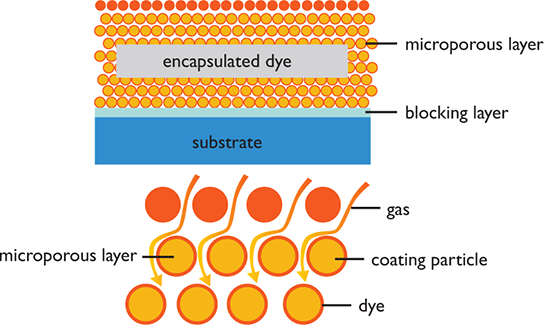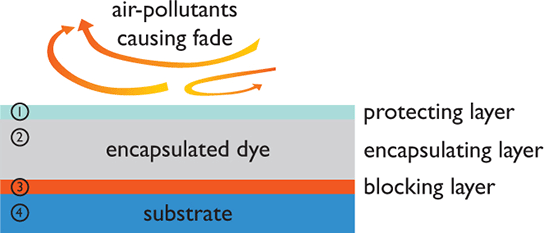Introduction to Fine Art Printing – Part 7: Selecting a Paper for Fine Art Prints
Besides colour rendering (parts 3 and 4) and equipment calibration (parts 5 and 6), the choice of paper in fine art printing is important at both the artistic and technical levels. A good paper choice is one that complements the image, helps take it to the next level in artistic expression and improves its value to the collector. Technically, the paper is a vital component of the printing process and determines if the print is durable enough to last for the years to come. Whether it is a portrait of an elderly gentlemen or the rolling landscape of an English countryside, your choice of paper has a crucial role to play in fine art printing.

What makes a good fine art paper?
Many elements determine if a paper is indeed suitable for a precise and long-lasting print. The points to consider include:
- The material of the paper
- Coating technology
- Colour of paper
- Paper weight or ‘gsm’ (grams per square meter)
- Surface texture or finish
Paper material
A good paper for inkjet printing must comprise of at least 2 layers – the paper base and the coating applied on this base. The very best paper base are made from cotton (rag) fibre and wood cellulose, or a combination of the two. Rag paper containing up to 100% cotton or linen fibre are also the most expensive, as they are known to last hundreds of years without appreciable fading, discoloration, or weakening of fibre.

Another consideration is that the paper must be acid-free, with a pH value of 7.0 or greater. Any presence of acid in paper will be transferred to the inks on the print, causing it to fade and discolour. Paper manufacturers usually state the paper’s pH value on the packaging.
Whiteness and brightness
As a rule of thumb, the whiter the paper, the higher the contrast of colours in the printout and the resulting print benefits from a richer colour gamut. Hence, photographers looking to creating colourful, vibrant pictures often turn to bright white paper. The brightness of a piece of paper is typically rated on a scale of 1 to 100, with 100 being the brightest. For example, multipurpose bond paper used in copiers and office printers have a paper brightness rating in the 80 range. Inkjet photo papers, on the other hand, are rated in the mid- to high- 90 range and are able to reflect more light, making it appear brighter.
To create the brightness, paper manufacturers either bleach the paper with chlorine or apply Optical Brightening Agents (OBA). Paper produced this way may not retain its brightness and over time, colour shifts occur. If longevity of print is important to you, choose paper produced without chlorine bleaching or OBA. To determine if a paper has optical brightener, shine a UV light onto the paper in a dark room. If it lights up brightly, optical brightener has been added during production.
Looking out for chlorine-free paper requires a basic understanding of the terminology that paper manufacturers use. For example, ‘Chlorine-free’, meaning no chlorine was used, is not the same as ‘Elemental Chlorine-Free’ (ECF). ECF-treated paper is produced using chlorine derivatives. Look for paper using pulp that bear the Totally Chlorine-Free (TCF) description.
Paper weight
The weight of paper is measured in grams per square meter (gsm or g/m2). For fine art printing, heavier paper is usually preferred as it gives your print rigidity, hence preventing curling and warping. Hence, many photographers prefer to use paper of 230gsm or heavier. It is also good practice to use a heavier paper grammage when creating larger prints to make it easier to handle during mounting. However, do note that not all printers are able to handle thick and heavy paper as most lack rear paper loading capability. Look for printers that support a straight paper path feeding e.g. Canon imagePROGRAF PRO-500.
Coating technology
A good fine art paper should be coated for the best printed results. There are three types of coating technology available.

Microporous coating – The coating consists of a fine layer of ceramic material ground to fine powder. Paper with this coating dries quickly. However, because of its porous nature, this paper is not recommended for use with dye-based inks as the ink will be constantly exposed to air and may lead to discolouration over time. The best match for this paper is pigment-based ink.

Swellable papers – The coating is made of polymer material that swells in contact with ink droplets from an inkjet printer. The coating absorbs the ink and allows the colorants to penetrate the top layer of the paper. These papers are best for dye-based inks and you can expect a very fine and crisp print that resists fading.
Resin-coated (RC) paper – This is a fibre-based paper popularly used in consumer wet prints from the darkroom but has since been widely used in digital inkjet printing. The paper consists of a base substrate made from plastic and is encapsulated by two thin polyethylene layers. A swellable or microporous coating is then applied on top to make it suitable for printing. There are RC papers available for both pigment and dye-based inks. Although the paper is highly durable, many photographers feel that it feels too much like plastic, and lacks the tactility and texture of traditional paper material.
Paper surface (Paper finish)
A wide range of paper finishes are available. They are categorized as follows:
- Glossy
- Semi-gloss, Luster, Satin
- Matte

Typically, the smoother the paper, the sharper a photo appears. To bring out the most radiant colour in your image, glossy paper and semi-gloss paper are the best candidates for printing. Photographers looking to make fine art black-and-white prints may consider using matte (sometimes also known as velvet) papers as they create a smoother look that flatters skin tone. Do note that glossy papers are not optimal for pigmented ink as pigments mainly reside on the surface and may interfere with the gloss of the surface.
Some tips on choosing the right paper for your image
- A paper must match the ink technology used e.g. dye or pigment.
- The paper should suit the subject matter e.g. choosing a canvas media for brightly-coloured, fashion-related imagery is considered a mismatch.
- And of course, the paper must suit your personal preference.

For making prints with many fine details e.g. fashion, a glossy, bright-white paper may give the best result. A print of a landscape with picturesque scenery may look better on a watercolour paper. Likewise, a black-and-white print of a portrait is visually more pleasing when printed on paper with a slightly off-white tint.
Printing on unconventional media
In the pursuit of artistic expression, some photographers look beyond the usual source of materials to achieve a unique look for their photographs. Photographers have been known to use paper media made from flax or cotton cloth normally used for oil painting or acrylic painting. Or paper made from environmentally-friendly bamboo and non-wood materials such as bagasse (sugar cane fiber waste) are drawing attention for their artistic possibilities. More and more are also using Washi or traditional Japanese paper made from the barks of Japanese trees. These contain longer fibers than western paper, giving prints a unique texture and feel.
Armed with some knowledge of paper characteristics, you will be able to choose a suitable paper for your next fine art printing project.
In the next article, we will explore creating a colour chart to test the suitability of traditional and non-traditional paper media.
Receive the latest update on photography news, tips and tricks.
Be part of the SNAPSHOT Community.
Sign Up Now!

































